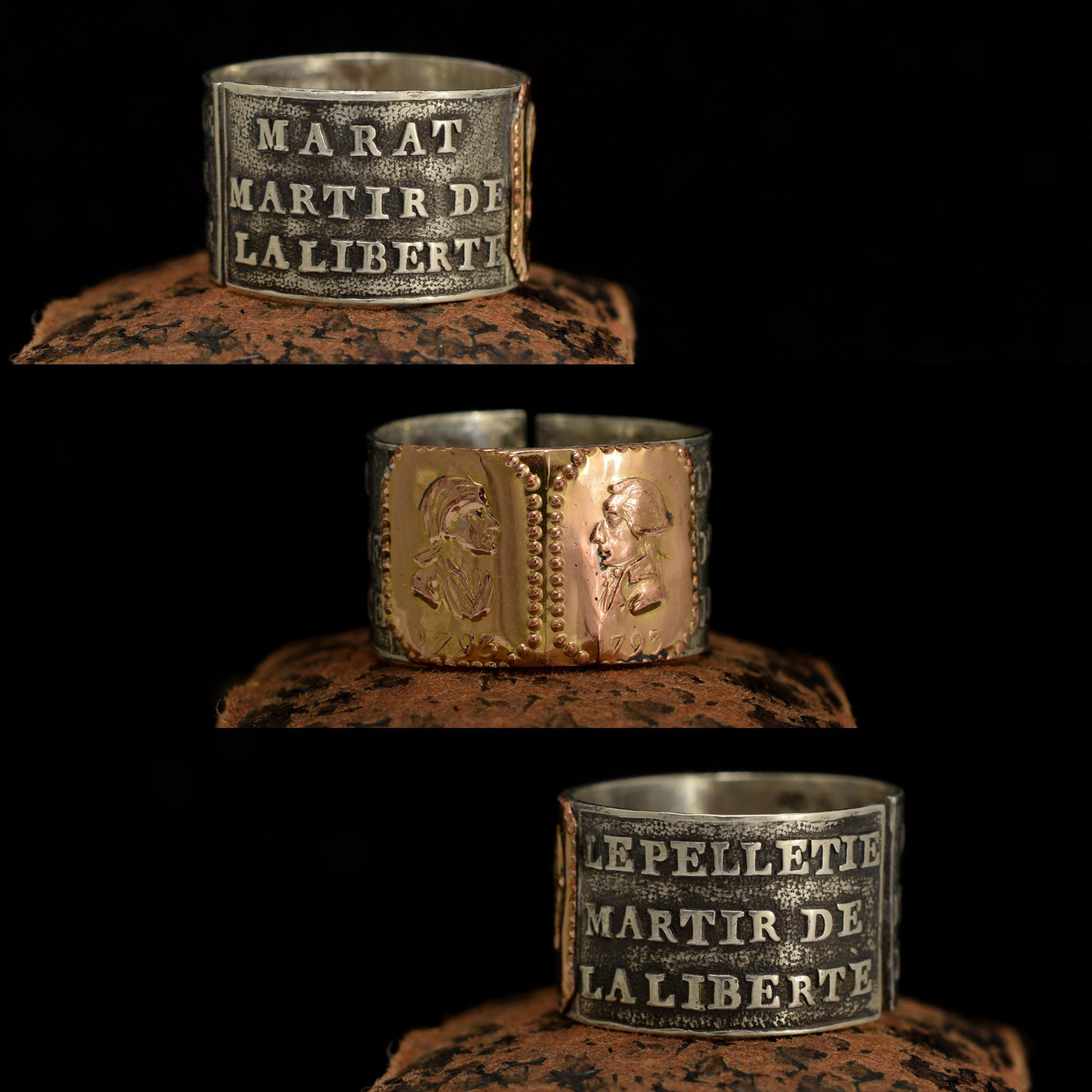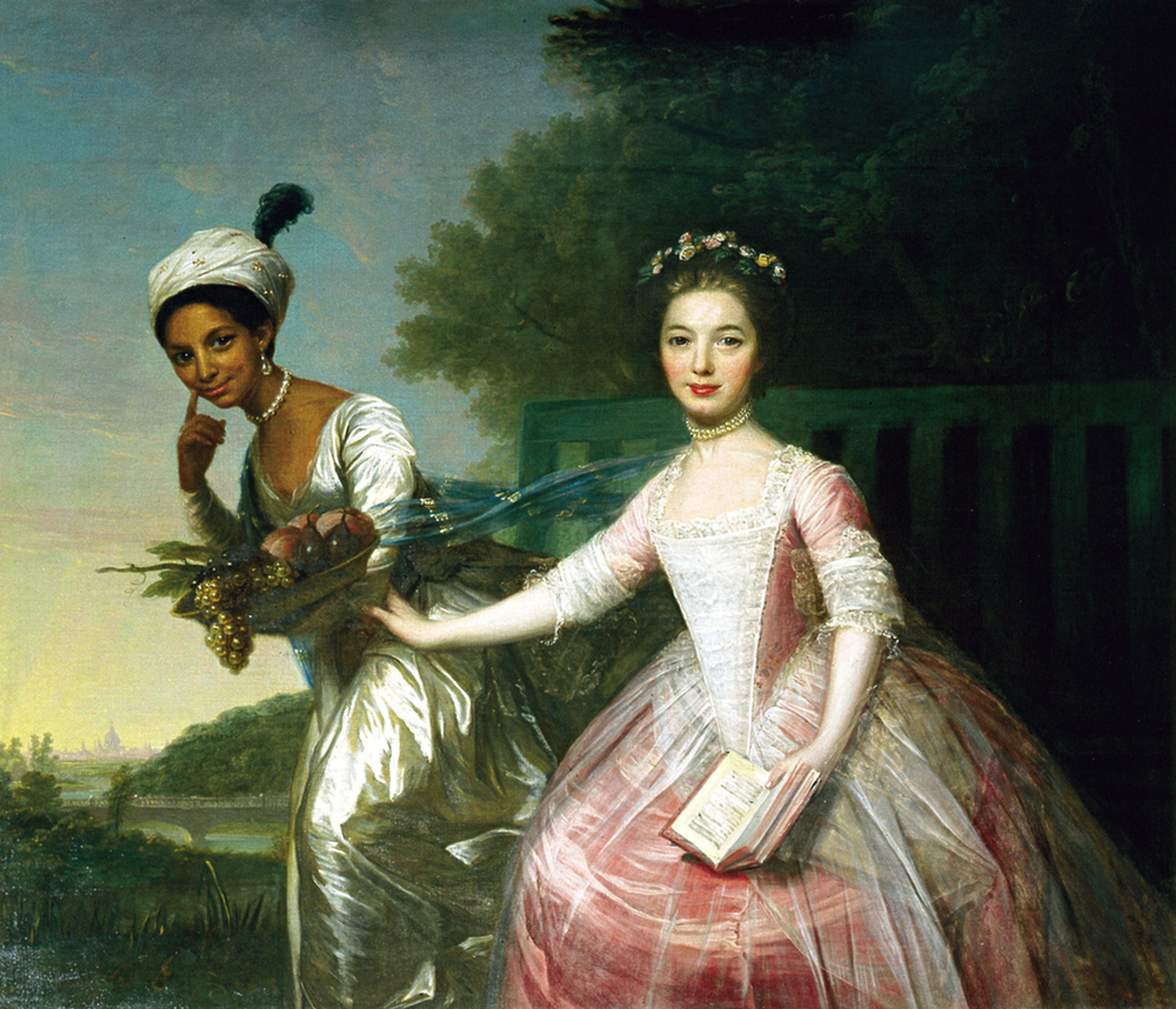
This rare and unusual mourning ring was made to commemorate the deaths of Jean Paul Marat and Louis-Michel Le Peletier, both famously assassinated by French Royalists in 1793. Marat was killed in his bath by Charlotte Corday, while Le Peletier - who cast one of the deciding votes for the execution of King Louis XVI - was slain in a restaurant in the Palais Royal by Philippe Nicolas Marie de Pâris. The ring features 10k gold profile portraits of the two revolutionaries affixed to a wide silver band with the words "MARAT/MARTIR DE/LA LIBERTAD" on one side, and the other reads, "LEPELLETIE/MARTIR DE/LA LIBERTE". This phenomenal ring is a size 7; originally the split in the back of the band would have been closed by a seam with five vertically arranged stars. If desired, the split can be soldered, however the ring's size cannot be adjusted.
thedetails
- Materials
Silver, 10k gold
- Age
c. 1793
- Condition
Very good - originally this piece would have had a seam or joint with five stars in a vertical line closing the ring
- Size
7, cannot be resized; 11.7mm width
Need more photos?
Send us an email to request photos of this piece on a model.

Aboutthe
GeorgianEra
1714 — 1837
As imperialist war raged in the Americas, Caribbean, Australia, and beyond, the jewelry industry benefited: colored gems from all over the empire became newly available. A mix of artistic influences from around Europe contributed to the feminine, glittering jewels of the era. Dense, ornate Baroque motifs from Italy showed up in Georgian jewelry, as did French Rococo’s undulating flora and fauna. Neoclassical style made use of Greek and Roman motifs, which were newly popular due to the recently uncovered ruins of Pompeii and Herculaneum. Lapidary methods improved: the dome-shaped rose cut was popular, as was the “old mine cut,” a very early iteration of today’s round brilliant cut.
The boat-shaped marquise diamond cut was developed around this time, supposedly to imitate the smile of Louis XV’s mistress, the marquise de Pompadour. Paste — an imitation gemstone made from leaded glass — was newly developed in the 18th century, and set into jewelry with the same creativity and care as its more precious counterparts. Real and imitation gems were almost always set in closed-backed settings, lined on the underside with thin sheets of foil to enhance the color of the stone and highlight it's sparkle. This makes Georgian rings tough for modern women to wear, especially on an everyday basis: genteel, jewelry-owning ladies of the 18th century were not famous for working with their hands like we are. Nor did they wash their hands as much as we do. Water will virtually ruin a foiled setting, so take special care with your Georgian ring. Very little jewelry from this period is still in circulation, and it's very difficult to repair.